|
BULB LOG 51 - 13th December 2004
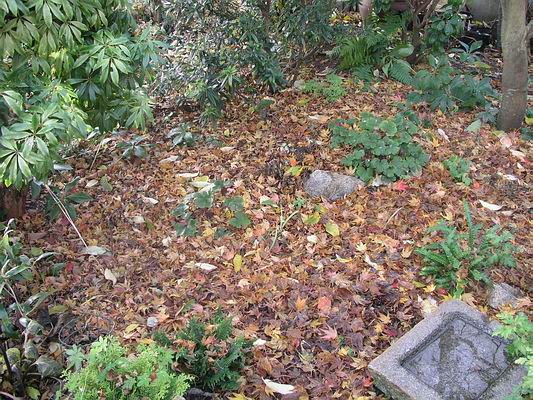
Acer leaves
It is the time of year when I gather up the fallen leaves, even though some of them look very attractive, like these from an Acer. These are the newly fallen leaves from one particular Acer that I grew from seed, collected from A. palmatum aconitifolium, which always hangs onto its leaves long after the others that we grow.
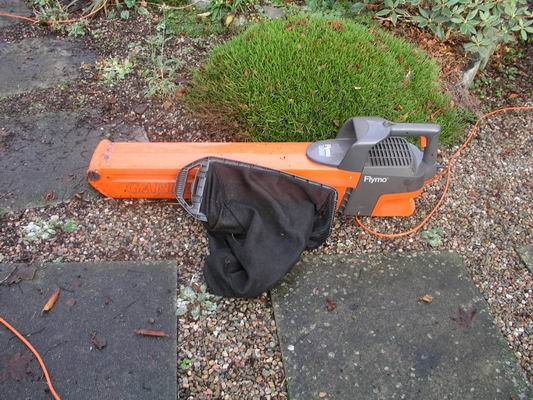
Leaf vac
I still use our electric leaf vac for lifting most of the leaves, with this I can suck up the leaves without lifting the mulching materials from the beds. The leaves are a nice crop and are stacked in a pile in our compost area where they will break down and provide a valuable constituent of our compost mix - leaf mould. (See log 49- 2003)
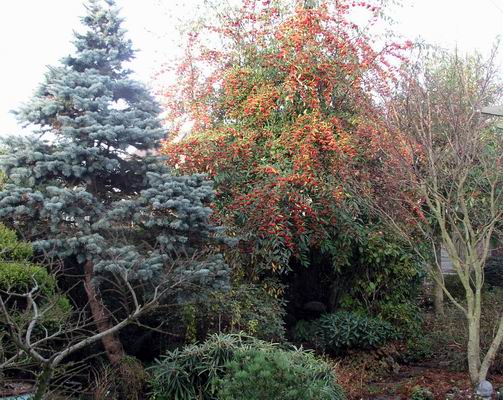
Garden cotoneaster berries
We grow a lot of Cotoneaster trees which hang onto their leaves right through until February or March, unless we get some very severe frosts. This is a good and a bad thing. Good because it provides the birds with some shelter and bad because there is a slow continual drop of leaves so tidying them up is ongoing. The big plus with the cotoneaster trees is their berries which ripen later than the sorbus and so attract the berry-eating birds (waxwings, redwings and fieldfares) to the garden over a longer period.
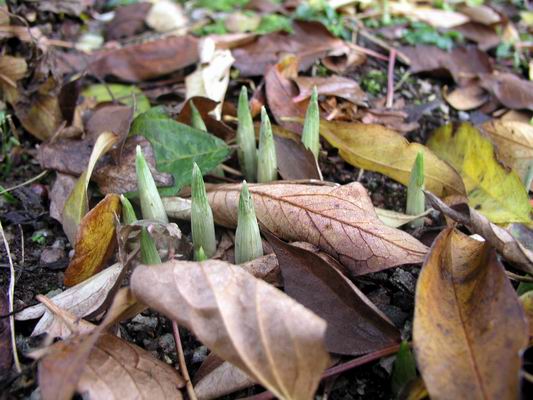
Iris 'Kathrine Hodgkins'
When I am doing these routine jobs, like leaf lifting or weeding, I notice all sorts of details in the garden like the Iris 'Kathrine Hodgkins' buds well extended already.
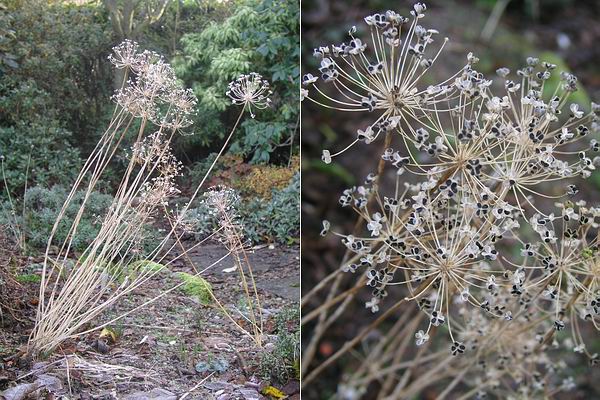
Allium seed heads
The Allium seed heads are also looking very attractive and will provide an attractive feature in a bulb bed through December. I never rush to cut down dead stems as I think it is an essential part of the garden landscape in winter and it is a wonderful sight and an entertainment to watch the tits and the gold crests gripping the stems while foraging for bugs and spiders.
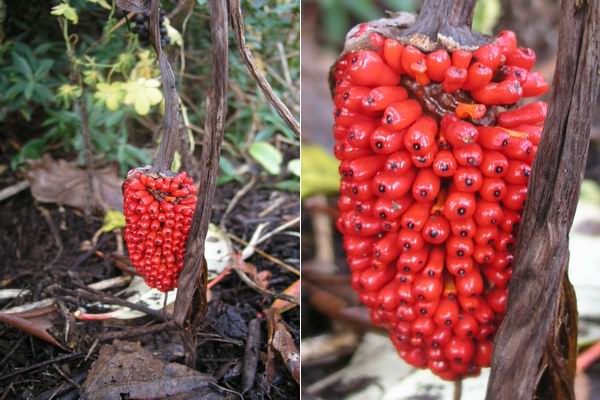
Arisaema berries
Some of the bulbs have a very seasonal look like these Arisaema berries still hanging from their withered stem.
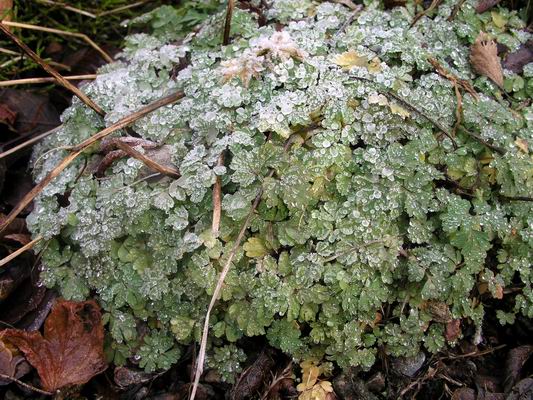
Corydalis x 'Craigton Blue'
You will all remember Corydalis x 'Craigton Blue', the hybrid between C. elata and C. flexuosa with the lovely deep blue flowers (log 27 2004), here are its leaves looking festive touched with the frost.
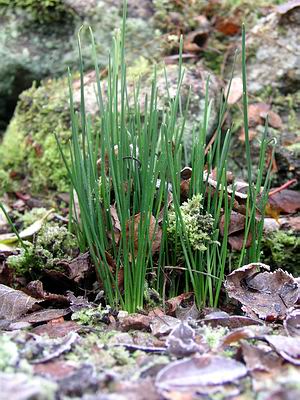
Narcissus bulbicodium leaves
The leaves of Narcissus bulbicodium are well advanced and if I do not remove the fallen tree leaves it can cause the Narcissus leaves to become etiolated plus the fallen leaves also offer cover to slugs that will chew on these 'winter greens'.
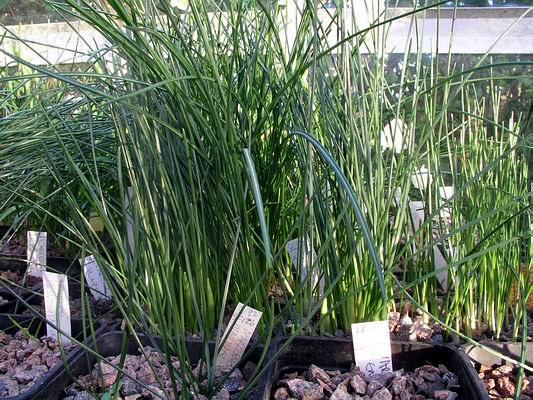
Narcissus pots
When our Club Treasurer, Jim Divers, visited the other day he said that I should show you some of the pots of Narcissus just to remind you how many bulbs I pack into even a small pot. Here are some 9cm pots crammed with foliage and as many flower buds just starting to push through. Most bulbs grow perfectly well packed in like this as long as you provide them with plenty of water and nutrients so that they do not have to compete with each other.
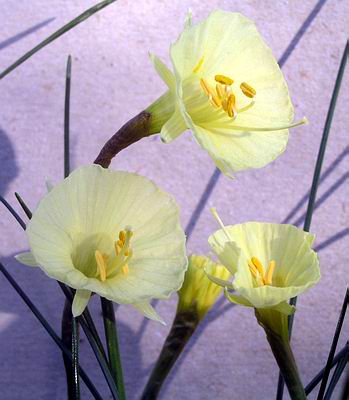
Narcissus 'Nylon'
This is one pot that I have labelled as Narcissus 'Nylon' I have not managed to confirm the name as yet. From reading the various texts I discover that this plant was given to Alex Gray, who gave it the name 'Nylon', by John Blanchard's father. However these bulbs that he received were a group of seedlings and not a clone, so the muddle and confusion started right at the beginning of its distribution. It is reassuring to see that even the best plantsmen keen to distribute and share a good plant can get us in a muddle.
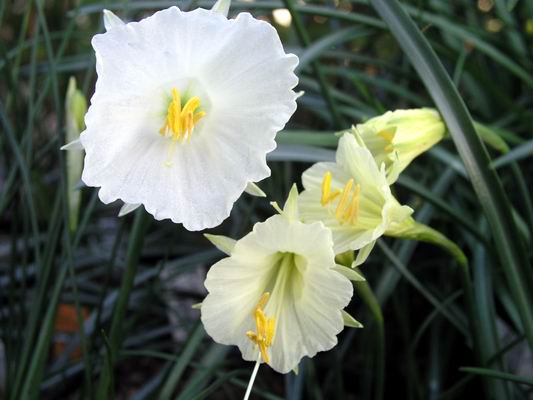
Narcissus comparison
The larger white flower on the left is N (romieuxii ssp)albidus var. zainicus - I put the romieuxii ssp in brackets as some botanists give albidus as a species and it keeps the labels shorter. The smaller yellowish flowers to the right are some also some form of N romieuxii, the taxonomy of which becomes more complicated the more you read about it - add to this that we raise many from our own seed collected from open pollinated plants in our bulb house that is crammed full of the wee gems.
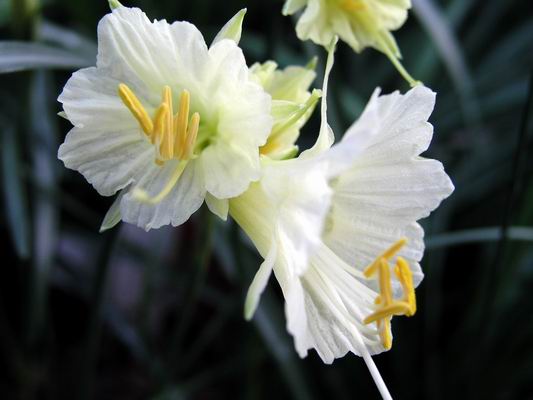
Narcissus romieuxii cross
Here it is in close up showing the very exerted style and anthers and the lobed and pleated tube.
I read recently that people were wondering why their Narcissus were flowering so early and one comment was it was connected to when you first apply water to the bulbs - water is only part of the story.
For years I was aware of the fact that down in the South of England my friends had N romieuxii in flower months ahead of mine up here in Scotland - they regularly had them in flower by November or December. After much observation I have decided that when the flowers open is not directly related to when you first introduce water but it is to do with the soil temperature when the roots are first forming. Bulbs have what I call a time window when they want to start into growth; their roots will start to grow in autumn even if there is no moisture present - the presence of water initiates a rapid root growth phase. If it is cold during this period the roots, leaves and flower stems grow very slowly with the flowers appearing in the early part of the year. If however it is mild, like it is in the South and also in Aberdeen for the last few years, then the leaves and flowers come up as early as October. The Dutch are masters of this knowledge as you can see at the big shows like Chelsea in late May when bulb suppli
ers have great displays of bulbs including Narcissus that should be long past flowering - these have been kept in a suspended state of growth in carefully regulated cold stores.
^ back to the top ^
|

